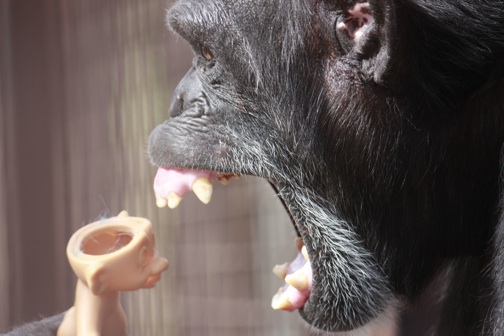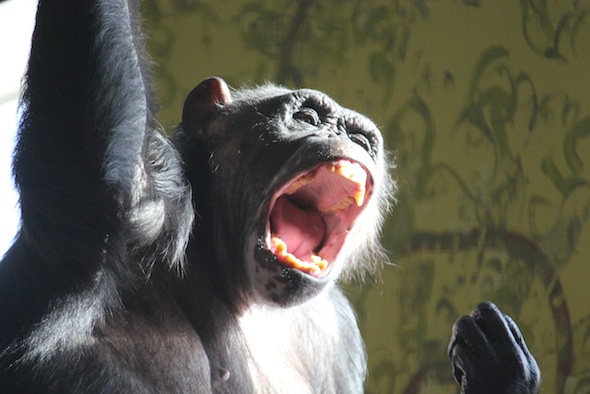Apes (humans included) all have the same dentition pattern, which is a fancy way of saying we have the same number of teeth, and in the same order, across the board. We also have baby teeth, or “milk teeth,” that we loose when the adult teeth come in.
One difference between our dentition is that though non-human apes have canines in the same place as humans, their canines are much larger than ours. What we know about diet probably doesn’t explain why they would have almost carnivore-sized canines. All apes eat mostly fruit, leaves, and other plant items as well as the occasional small mammal meat in the case of chimps. Still, even that small amount of meat wouldn’t be the reason for why non-human apes have such large canines.
What other purpose can teeth serve if not to chew up food? Threat. Certainly large canines are quite intimidating, and can serve as a warning to enemies to stay back, or else you could get bit and boy—it’ll hurt!
In these photos you’ll see the large canines I’m referring to—the chimps are only yawning, but you can see just how intimidating their teeth can be. Just another reason why chimpanzees do not make good pets!
Foxie:
Negra:
Burrito:
Jamie:








